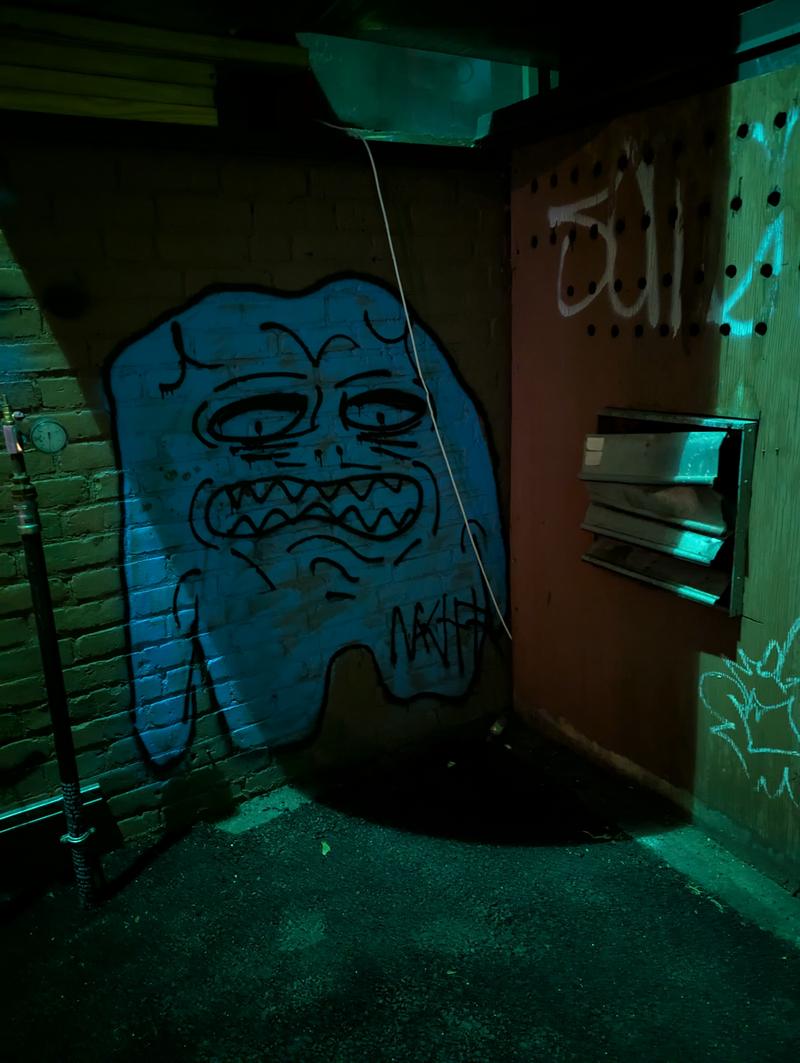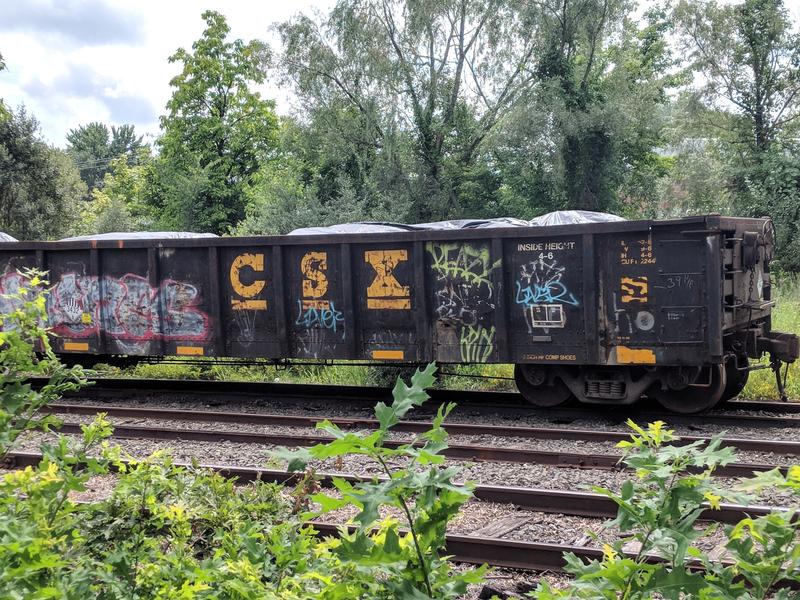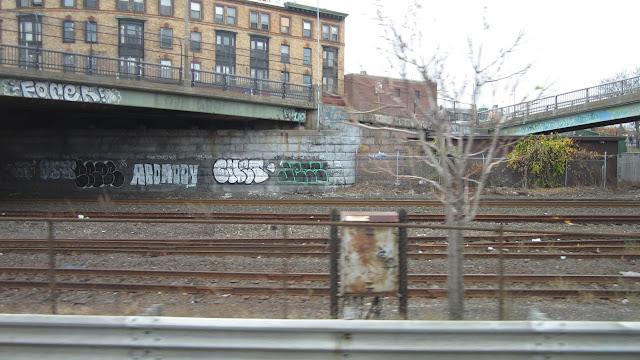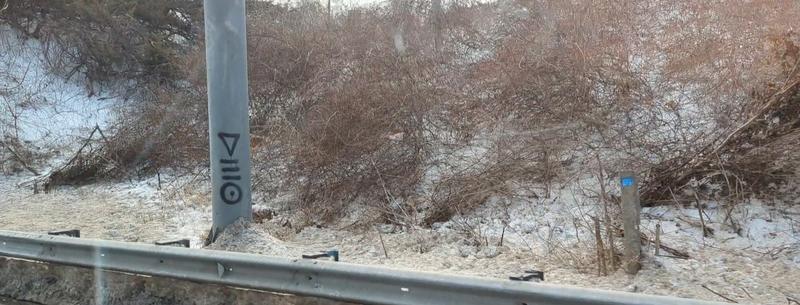Graffiti
Graffiti, whether it be framed as art, billboarding, or vandalism, is enough of a challenge to the statuesque to warrant its own distinct category. While modern impressions of the term may bring to mind murals of spray painted text, the concept itself can be long traced back through the roots of human history. Amongst artifacts from the ancient world we can find traces of names, "tags", gossip, and political messages, all which tie and tether the raw, pure reality a human experience to the spinning globe of the world and the eternal ebb of time.
This collection of exhibits is captures a range of graffiti from various areas across the United States. Each piece is unique, some are rough while others are more refined, and many are composites created layer by layer from numerous people tagging the same spot over time.
1: Alleyways
Alleyways occupy a unique position in the landscape of graffiti. Tucked between buildings and hidden from main thoroughfares, they provide both privacy and opportunity: the conditions that allow graffiti to evolve outside the bounds of regulation and visibility. The works found here often serve as experimental spaces, where artists test new styles, refine techniques, or leave messages intended for a local audience rather than the public at large.
The density of graffiti in these spaces tells its own story. Walls become layered records of time and interaction, with older markings fading beneath newer ones. In some cities, entire alley networks have become informal galleries, attracting photographers and visitors while remaining outside traditional art institutions. The result is a living archive of expression, documenting the dialogue between artist, surface, and environment: a history written, erased, and rewritten with every new mark.


|
2: Brick, Glass, and Steel
The materials that make up a city: brick, glass, and steel, each offer distinct surfaces for graffiti, shaping both how it is created and how it endures. On brick, paint seeps into porous texture, softening edges and lending an aged permanence. Glass, by contrast, resists absorption; it invites etching, scratching, and adhesive stickers instead of spray. Steel doors, frequently repainted or replaced, become sites of constant renewal in a cycle of marking and erasure that speaks to the tension between public expression and property maintenance.
Taken together, these surfaces reveal how environment influences artistic practice. The durability of brick allows for long-standing works that weather into the architecture itself, while the fragility of glass captures fleeting gestures. Steel reflects the rhythm of daily use as it is opened, closed, tagged, and repainted in continuous succession. Each material records interaction differently, transforming functional infrastructure into a quiet record of urban negotiation between permanence, impermanence, and the human impulse to leave a trace.
Brick #
These walls tell a quieter story. Each brick bears a name, a date, or a short message, written not in sweeping paint or elaborate tag, but in the fine permanence of marker. The result is a surface that feels more intimate than confrontational. Here we find a chorus of individual presences rather than a single artistic statement. Over time, the layered handwriting creates a textured record of those who have paused long enough to leave a trace.
Walls like this can be found around the world, wherever people feel compelled to bear witness to a place or moment. They recall pilgrimage walls, those found at shrines, schools, and historical landmarks where writing one’s name becomes a ritual act of participation. Whether it’s a tourist signing a stone in a foreign city, or a local marking the spot where something meaningful once happened, the gesture is the same: I was here.
-
 PXL_20250816_190313200
PXL_20250816_190313200
-
 PXL_20250816_190321660
PXL_20250816_190321660
-
 PXL_20250816_190329600
PXL_20250816_190329600
-
 PXL_20250816_190337160
PXL_20250816_190337160
-
 PXL_20250816_190356325
PXL_20250816_190356325
-
 PXL_20250816_190401617
PXL_20250816_190401617
3: Collection Boxes #
Across city streets and quiet suburbs alike, the humble collection box stands as a fixture of routine, a sentinel of correspondence and communication. Yet for many, these metal forms have become more than functional. They are canvases, message boards, and mirrors reflecting the pulse of their surroundings. Layers of marks and tags gather over years, each mark both an act of expression and reclamation.
Where one person sees government property, another sees a public surface - a place to declare presence, to signal belonging, to test boundaries. The result is a living palimpsest, ever-changing as paint fades and new marks appear. On these boxes, the ephemeral meets the everyday: the transience of graffiti collides with the permanence of infrastructure, leaving behind a dialogue between artist, observer, and institution.
Boston #
Northampton #
4: Kilroy was Here #
Few pieces of graffiti have traveled farther, or lasted longer, than the simple phrase “Kilroy was here”. Accompanied by the sketch of a bald-headed figure peering over a wall, its nose and fingers just visible, the image appeared across Europe, North Africa, and the Pacific during World War II. It was scrawled on ship hulls, bunker walls, and the ruins of captured towns.
5: Railcar and Train Track #
Tethered to the liminal, names and tags are scrawled across the sides of trains and rusty rail cars. Here graffiti finds itself a testament to the transient nature of trains, and a reminder of the lives that surround them: the people who ride, and the places they pass through.



6: The 🜄☰☉ Tags of Hartford and New Haven #

For nearly two decades drivers passing through the greater Hartford and New Haven regions of Connecticut have noticed the recurring presence of three symbols spray painted on the sides of tunnels, spanning overpasses, and on structures throughout the region.
The characters “🜄☰☉” consisting of a triangle, three horizontal lines, and a circle with a dot in the middle, have left onlookers wondering about secret meanings since the they first started appearing in the early 2000s.
Some attribute the work to a graffiti artist going by the name Veo, the name derived directly from the symbols of the tag. Unconfirmed reports of places the tag has appeared extend as far as Puerto Rico, which could suggest a spanish translation of the word veo, which means “I see”.
Others have compared these symbols to the “hobo code” used by traveling gig seekers during the Great Depression. The symbols were said to have been used to communicate information such as a location’s level safety, or the availability of food. The symbols also resemble other ancient scripts, the “🜄” being a symbol used on ancient Greek manuscripts to denote water, and “☉” representing gold.
More likely than not, many instances of the tag are the work of copycats, who whether they are aware of it, are participating in a tradition as old as human history. From the walls of the Grand Palestra of Pompeii, possibly to the walls of ancient caves, the perpetuation of viral phrases, pictures, and “memes” has been a part of human culture for as long as we have been able to communicate.
At present, this digital museum has documented tags in the following locations:
- Hartford, CT
- New Haven, CT
- Enfield, CT
- Springfield, MA
- Charlton, MA (Scratched into glass of doors of Charlton Service Plaza Westbound)
- Northampton, MA

















